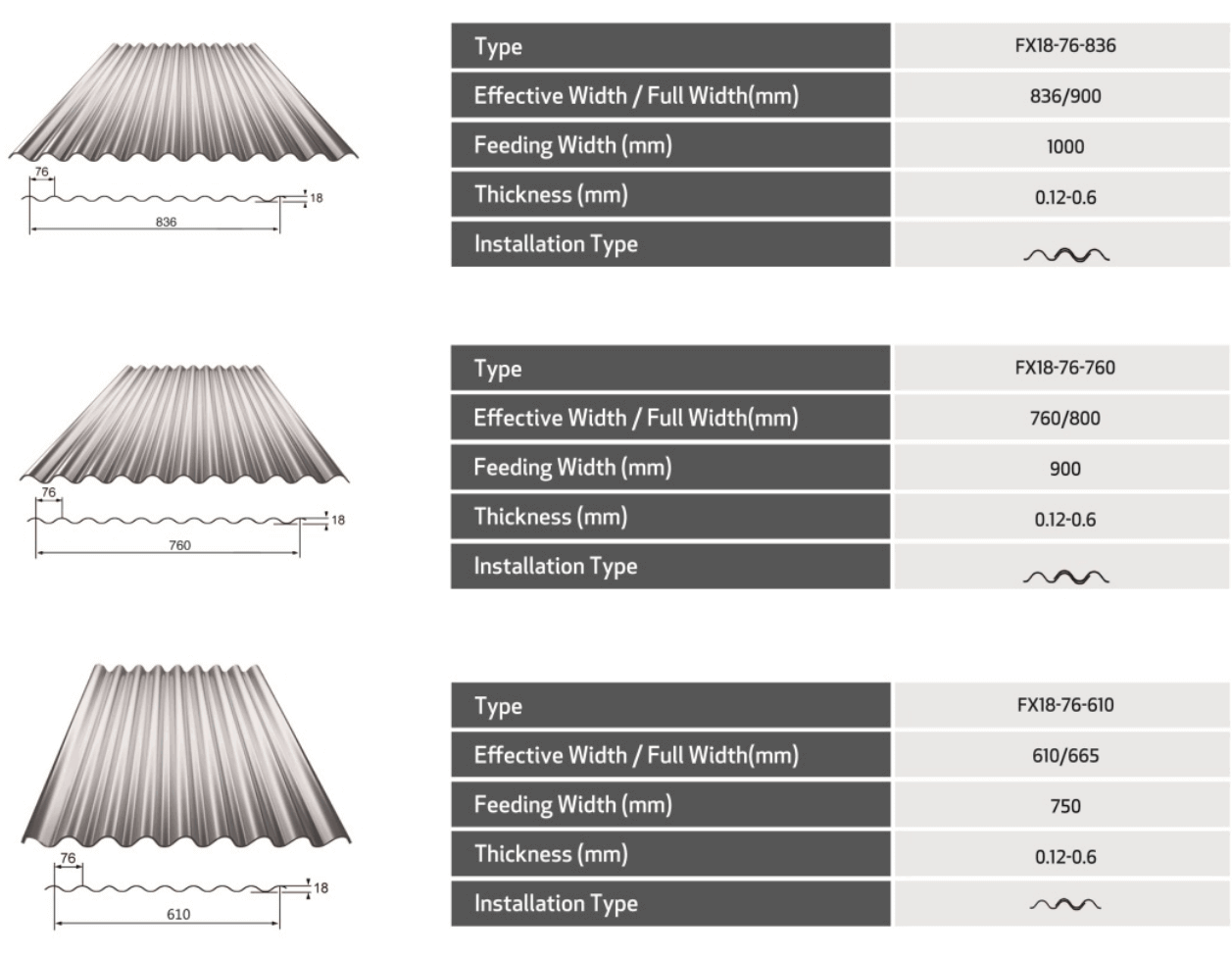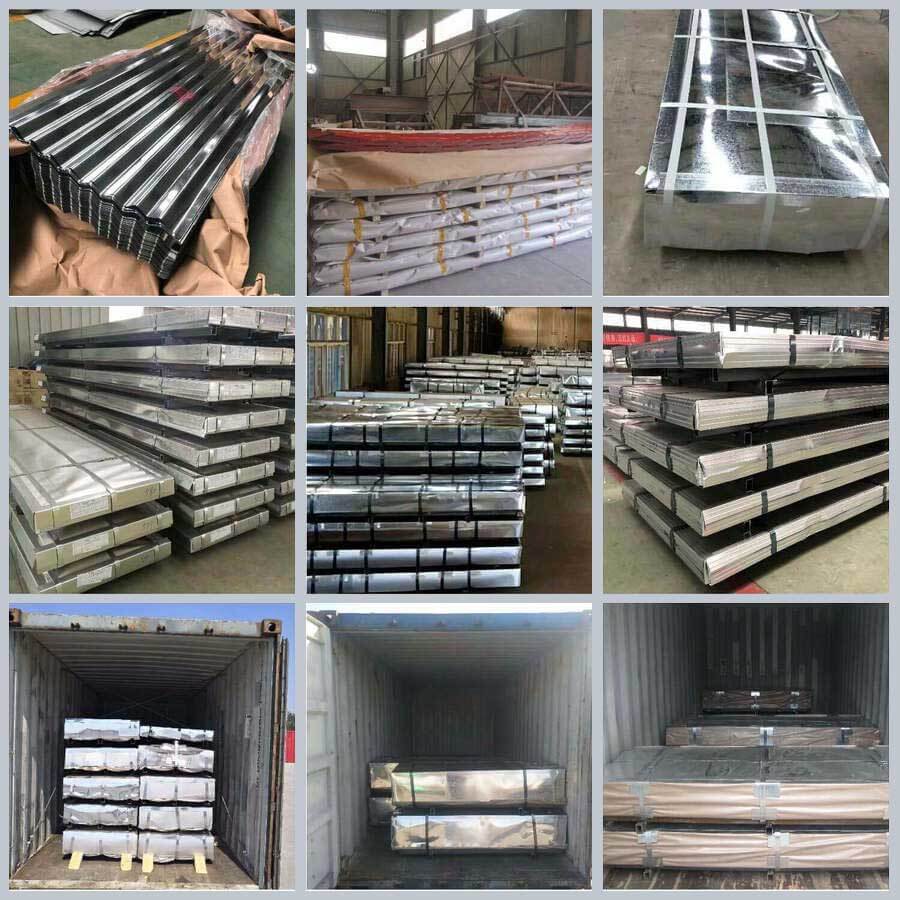aluzinc roof sheets
aluzinc roofing sheet corrugated
galvalume steel sheets
galvalume roofing sheet
galvalume sheet
| Material | Galvalume steel coils |
| Thickness | 0.12mm-0.8mm |
| Length | 1m-11.8m |
| Hardness | 60HRB to 90HRB |
| Zinc coating | 40g/m2 to 275g/m2 |
| Special use | High strength steel plate |


Different types of roofing sheets
Roofing sheets are manufactured from a range of materials, each known for their varying properties and applications on different types of roofs. Choosing the right roof sheet can increase the longevity and durability of your roof. Different types of roof sheets come with their own unique set of pros and cons. Each type caters to different needs. Your roof is only as strong as the materials that it comprises. The level of protection that your roof receives ultimately depends on the clever combination of various materials that work together to provide maximum performance. Whether the roof is for your garage, shed or a different building entirely, roofing sheets are vital for protecting your roof from harsh weather.
They act as a physical barrier, shielding the more vulnerable underlying components from high-winds, torrential downpours, snow and hail. Plus, thanks to various technological advancements, these sheets boast an incredible range of features and functions and are available in all manner of sizes. The only thing you need to know is which roofing sheet is best suited to the building you’re working on. There are different types of roofing sheets each with unique composition, advantages and applications, each of them are explained below.
The different types of roofing sheet
AC roofing sheets
AC sheets are essentially ageless and require zero maintenance! They’ve been proven to be the most easy-to-install, strong and durable roofing material for warehouses, factories, low-cost housing, and practically, any structure needing a roof. Unlike their metal counterparts, they do not deteriorate with age and exposure.AC sheets do not deplete natural resources in any way and due to their exceptional strength and ability to cover inside areas as reinforcement, only 8% of chrysotile fibers are needed to combine it with cement and other raw materials. Once AC Sheets have been laid and joined, they require no replacements or maintenance because they are erosion-free, hence making them cost-effective.
FRP/ GRP roofing sheets
Fiberglass profiles are a cost-effective alternative to traditional materials such as concrete, steel, aluminum and timber. Whereas these materials have only one primary strength, GRP combines several advantages. This makes fiberglass ideal for the sustainable construction of the future. It gives you the same great strength as steel, but at only a quarter of the density. It is also possible to make weight savings in comparison with aluminum, as the density is 30 % lower. They are resistant to aggressive chemicals, liquids and alkalis. This makes them ideal for wastewater treatment plants, swimming pools, cooling towers and construction, where there is a risk of corrosion. These sheets are widely used for roofing applications in architectural roofing, skylights, transparent acoustic barriers, covered walkways etc.
Corrugated roofing sheets
Corrugated roofing is highly durable and it is because of its shape. These sheets require the support strips to stabilize the material since the screws for fastening do go through the peak of the ribs. The curvature of the ribs and valleys prevents the screws from sealing adequately in the valleys. Because of the special corrugated shape, flimsy and lightweight metals like aluminum can also be equipped to undergo decades of weather beating. The most popular corrugated sheet is a galvanized steel sheet, which is used mostly as the base material. These roofing sheets are ideally used for protecting garages, porches and sheds.
PVC roofing sheets
PVC is resistant to weathering, chemical rotting, corrosion, shock and abrasion. It is therefore the preferred choice for many different long-life and outdoor products. In fact, medium and long-term applications account for some 85 percent of PVC production in the building and construction sector.PVC has been a popular material for construction applications for decades due to its physical and technical properties which provide excellent cost-performance advantages. As a material it is very competitive in terms of price, this value is also enhanced by the properties such as its durability, lifespan and low maintenance. PVC’s abrasion resistance, light weight, good mechanical strength and toughness are key technical advantages for its use in building and construction applications. PVC is resistant to weathering, chemical rotting, corrosion, shock and abrasion.
GI roofing sheets
The GI coating has a unique metallurgical structure and gives protection against any abrasion, or mechanical damage that may occur during transportation, erection and service. GI roofing sheets are fitting in providing automatic protection to any damaged area of the sheet. The sheets give them cathode or sacrificial protection to any small area damaged during transportation. Thus the entire length of the sheets is protected by the coating.
Polycarbonate roofing sheets
Polycarbonate roofing sheets are available in a variety of qualities and thicknesses. They are much lighter in weight, yet durable, and resistant to breakage and cracks. They can be easily handled and can be fixed with the help of screws and support rods, or can be easily welded. Also, these sheets can be easily cut with the help of sharp-edged scissors and circular saws without the need for any additional tools and machinery. Polycarbonate roofing sheets being so strong and flexible helps the structures it is used to be more creatively designed. One of the most beneficial features of polycarbonate is that it lets in maximum sunlight while keeping out the harmful UV radiation. Therefore, it is the ideal choice when you want maximum light to come in without being harmful. These sheets are widely used in industrial and large-scale commercial buildings.
Corrugated polycarbonate roofing sheets
Corrugated polycarbonate roofing sheets are available in a range of choices for light transmission and possess fire-resistant properties. These roofing sheets are manufactured with precise specifications to find an apt use in industrial roof illumination and daylight cladding. The use of corrugated polycarbonate roofing sheets is greatly beneficial in enhancing daylight harvesting. With growing concern over the environment, these types of sheets are perfectly fitting. These sheets are used for commercial establishments, industrial applications, and warehouses.
Metal roofing sheets
Metal roofing sheets are a popular option as they come with great insulating properties. They are made of Zinc, Aluminium, Copper and Tin. Metal roofing provides many advantages, including the ability to withstand nearly any type of weather condition. Metal roofing comes in many different colors and finishes including the look of natural cedar shakes or stone. It has greater fire resistance and the ability to withstand a storm without damage. These sheets can be applied in garden buildings, garages, household cladding and industrial roofs.
Cladding metal roofing sheet
Cladding metal sheet roofing acts as a covering building material with a ‘protective layer’ to provide several practical and aesthetic advantages. They are composed of aluminum or steel. These types of roofing sheets shield the internal building materials from the harsh elements and increase the mechanical stability of the structure. The cladding protects from changes in temperature, wind, water absorption, sunlight and pollution, all of which can damage the structural integrity of a building and its aesthetics. These sheets are used in storage buildings.
Plastic roofing sheets
Plastic roofing sheets are light in weight, making them easy to carry, transport, and install. They are durable and cost-effective as compared to metal sheets. These sheets are easy to clean and are resistant to chemicals and corrosion. They are mainly used as garden sheds or for covering temporary structures.
Colour coated roofing sheets
Most colour coated sheets are made of Aluminium and it is one the lightest available commercial metals with a density of only a third of steel or copper. When exposed to air, aluminum sheets develop a thin layer of aluminum oxide. This makes them resistant to corrosion and rusting. So you can be sure your colour coated roofs won’t fade when exposed to rain, heavy winds, or bright sunlight. They are non-combustible and have a good fire rating. This makes them safe to use for homes, gardens, warehouses, factories, etc.
Sandwich PUF/PIR roofing sheets
The aluminum or steel facings themselves are surface coated and can be manufactured with profiles of various depths leading to a higher load-bearing. Polyurethane sandwich panels come complete with specially formed tongue-and-groove joints ensuring a perfect fit and maximum integrity, assembly is fast, easy and cost-effective. The resultant sandwich panel has a load-bearing capability many times greater than the achieved by adding together the load-bearing capacities of the individual layers. As a result, these thin, relatively lightweight sandwich panels can safely bridge wide spans. Metal-faced polyurethane sandwich panels are the system of choice today for large industrial buildings, refrigerated warehouses, office blocks, exhibition halls, fair pavilions, schools and sports halls.
Bio-composite roofing sheets
Synthetic or composite roofing materials are stronger and longer-lasting than their all-natural counterparts because they’re specifically engineered to outlast cedar, and possibly slate and other roofing materials. Biocomposites (natural fiber composites) from local and renewable resources offer significant sustainability; industrial ecology, eco-efficiency, and green chemistry are guiding the development of the next generation of materials, products, and processes. A biocomposite is a composite material formed by a matrix (resin) and a reinforcement of natural fibers. Environmental concern and the cost of synthetic fibers have led to the foundation of using natural fiber as reinforcement in polymeric composites. The matrix phase is formed by polymers derived from renewable and nonrenewable resources. This protects the roofing sheets from environmental degradation and mechanical damage, holds the fibers together and transfers the loads on them.
Bitumen roof sheets
Bituminous roof sheets are designed to protect residential and commercial buildings. As the name infers, these are layering that arrives at the site in the form of rolls. These are then spread out and laid on a firm surface. The most widely recognized sort of sheet-based layer is a bituminous waterproofing film. This type of membrane adheres to the substrate with a hot tar-based cement using blowtorches. Joints between adjacent membranes are also made with the same hot adhesive. Joints between contiguous layers are additionally made with the same air gun. The sheets are covered by around 100mm to frame a waterproof joint. A few films are even joined by dissolving them with a hot compressed air firearm and after that covering them on the beforehand laid sheet.
Bamboo roofing sheets
Bamboo roofing sheets are produced from a natural and sustainable resource and can be used to cover homes, storage facilities, animal pens and many other temporary or permanent structures. They have the same standard measurements as conventional corrugated roofing sheets. Bamboo roofs are quieter in the rain and cooler in the sun than conventional metal or plastic sheets. A study has shown that cows in sheds roofed with bamboo yield more milk than those under corrugated zinc sheets because of the cooler environment.